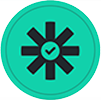What if person using my app, use 1 trigger for 2 separate actions (meaning 2 zaps) instead of combining them like zapier recommends. I’m developing app, and i need to address this kind of situation.
Best answer
1 Trigger use with 2 Separate Action case
Best answer by ikbelkirasan
- Create a unique
idin your database for each webhook subscription then return theidin the Subscribe function of the trigger. This will signal Zapier to save that ID, and it will be available viabundle.subscribeData.idin the Unsubscribe function. You can then send theidto your API to remove the webhook subscription. - Use the subscription URL itself as the webhook identifier in your database.
bundle.targetUrlis also available in the Unsubscribe function.
This post has been closed for comments. Please create a new post if you need help or have a question about this topic.
Enter your E-mail address. We'll send you an e-mail with instructions to reset your password.





